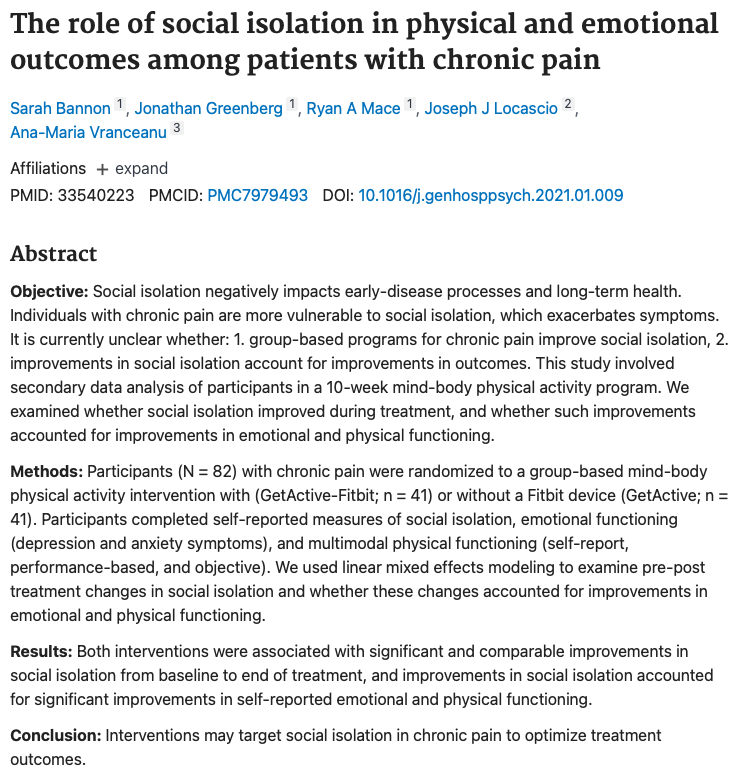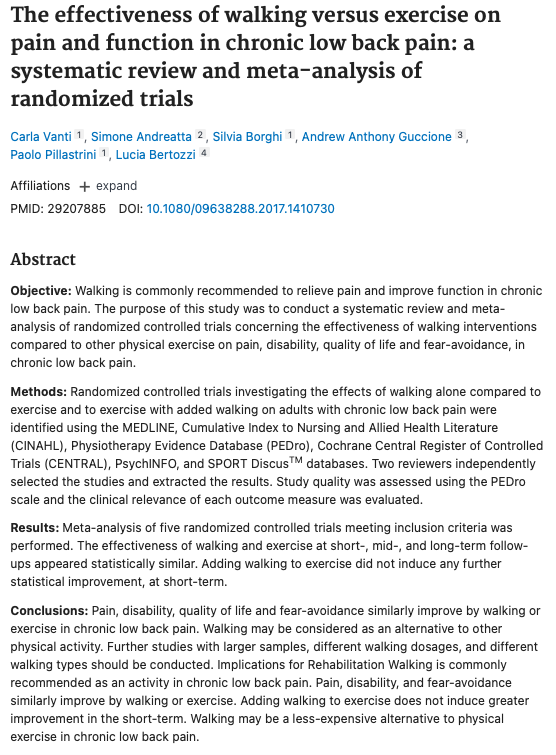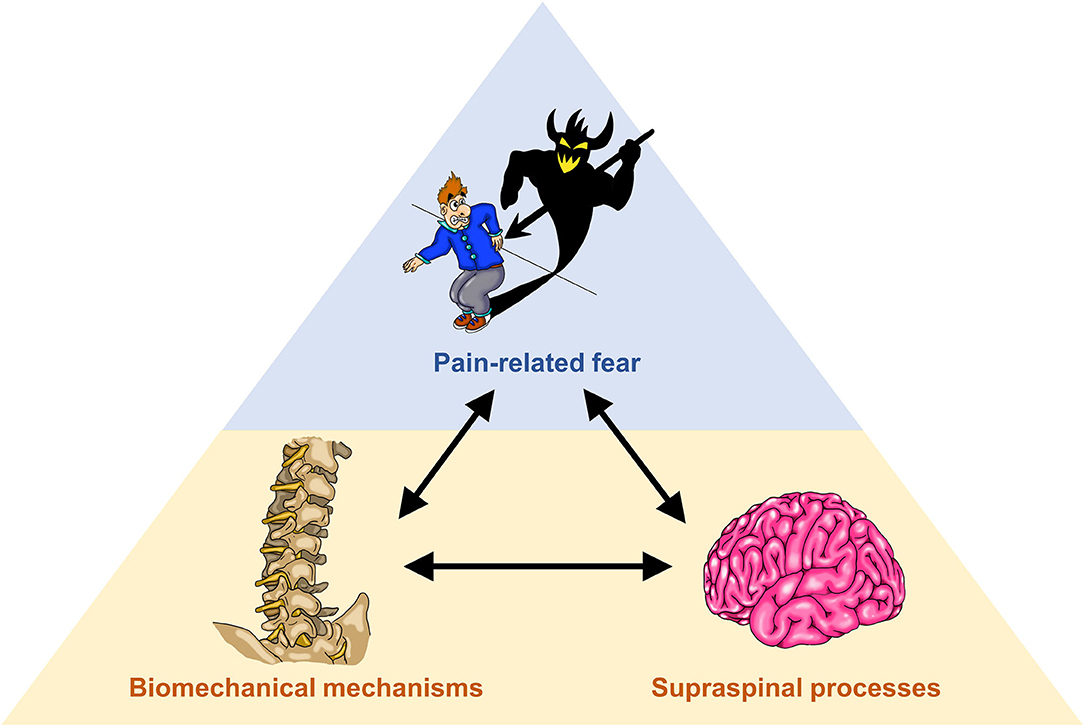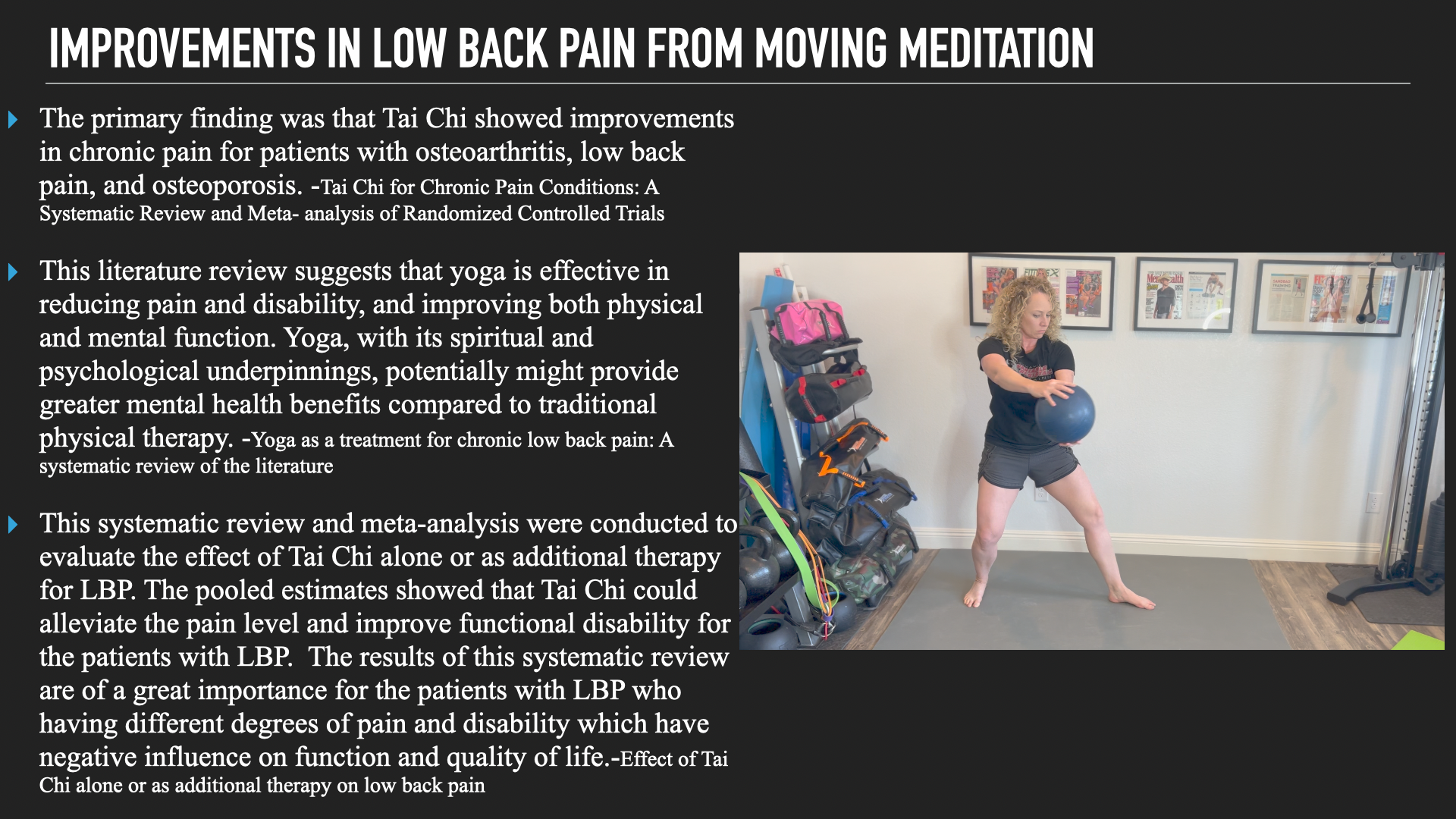10 Ways Fitness Can ACTUALLY Help Low Back Pain Part 1
2024-06-6
Sometimes our posts could sound a bit negative because we focus on where we go wrong in fitness and even therapy with helping low back pain. However, understanding our mistakes helps us go in better directions and make an actual positive impact upon people. What you may have learned is that chronic low back pain (the type of low back pain most people going to the gym typically are battling) is complicated and it could seem overwhelming. Are there real and practical methods fitness pros could teach people that would help people improve or possibly solve their low back pain?
Ten ideas might sound like a lot and it is in some respects, yet, it is far from the exhaustive list. I also don’t recommend you try to implement all these ideas at once. Pick maybe 1-2 that people sound open to and feel they can not only implement but be consistent with and there will be times where people are more and less successful with each. The goal is NOT to be perfect, but know that you can go back to helpful strategies to get back to positive habits.
Many might be surprised that I am not going to start with many familiar strategies like what is the best core stability exercise, or the best way to improve your hip mobility, but foundations that yes, anyone can learn and teach someone about how to use these strategies in their life. If a fitness pro takes time to teach a little here and there they can help increase consistency in training of someone with chronic low back pain, help them manage their symptoms better, and build truly raving fans that see them as a solution not a challenge to deal with in their life.
Let’s get into it!
10: Don’t Isolate
Remember, pain is a danger signal that the brain then makes all sorts of decisions about. Those that perceive pain as more of a problem tend to actually have MORE pain! I’m not saying pretend it doesn’t exist, I AM suggesting that you try to focus on things you can control and actions you can take to help manage the sensations you are experiencing.
This could be teaching people that when their low back pain starts to become more and more noticeable, text, call, or reach out to a friend or family member. Many people when low back pain gets intense start to socially isolate and this makes the pain worse as well. Even having a routine social interaction can help bring down the intensity of some of these sensations.
As challenging as it can be, maybe make it to the gym or some social environment. Even if you don’t do much of a workout, being around other people may help and especially if it is a group of people you are use to interacting with you can start to feel a little better or at the least not be consumed by the pain.

9. Go For A Walk
I know, your low back is intense, it can feel hard to move at all. It is so important to know that the majority of chronic low back pain is NOT due to any serious structural spinal damage (always make sure to see and get cleared by your doctor though). Trying to remind yourself that your pain is not dangerous can help you feel more confident that even if you have low back pain you can still do some activity.
Going for a walk actually serves three important purposes that can help low back pain. For one, we know movement that is not overwhelming can help our mood and even help low back pain. Going outside and if possible, being in a more green environment can often help with perceptions of pain and yes, improve our mood again. Changing our environment is another useful strategy to bring down the stress of our nervous system. Ever see or have you ever had to “leave the room” when you are really upset about something? There is actual neuroscience to this!
If you can go on a walk with someone that is even better and it wouldn’t be a bad idea if fitness pros, therapists, and gyms started walking clubs for lots of reasons that can improve low back pain and overall health.

8. Be Mindful
I’m not going to suggest you do some intense and mystical meditation. Instead, I am asking you to be aware of thoughts and feelings you are having at this moment. When low back pain starts to really impact you many people start to catastrophize. Their minds start running hard and they start seeing all these future problems that their low back pain is going to cause. For example, your low back pain starts to hit, you start to wonder how in the world are you going to be able to go to work? If you don’t go to work though, then your boss is probably going to fire you. If you get fired then your spouse is going to get really mad and maybe even leave you and take your family with them. Yes, it can start to snowball like this!
Catastrophizing has been highly correlated with increases in intensity of pain and is a major obstacle for many people with chronic low back pain. The first step is to see that this is something you are even doing. Once you do, you can challenge these emotions and feelings and see if they are even real. You can even start to question if these things did happen would they be as bad as you make them out? Maybe your job right now is really stressing you out and if you lost it you could find something that would be more enjoyable and be more understanding of issues you have with chronic low back pain. The point is just by first becoming aware we can start the journey to calming our nervous system and decreasing our pain levels.

7. Give Yourself Permission To Nap
Is getting quality sleep important to helping chronic low back pain? Yes, 100%! However, when you have pain and you often worry about everything that comes with pain it can be VERY difficult to get that quality sleep. The more you worry that you aren’t getting enough sleep the worse everything becomes as well. While we can discuss some simple and only a couple of ways to help improve nightly sleep, I think it is also very important to help people with chronic low back pain to learn that it is okay to rest and yes, even nap.
Because so many people with chronic low back pain have trouble sleeping at night, getting a nap in during the day could help fight both mental and physical fatigue that lack of sleep and chronic pain causes. When we get more sleep and feel better both mentally and physically, pain symptoms improve and our ability to deal with them get better as well. Even if you can’t actually nap, taking 10-20 minute breaks to listen to some music you enjoy, read a fun book or article, meditate, whatever you enjoy can be equally as beneficial.

6. Don’t Focus On Workouts, But Movement
Is exercise good for chronic low back pain? Yes!!! However, for a lot of people with chronic low back pain, they also think of a workout and exercise both as overwhelming and something that can flare up their pain. Instead of thinking of going to the gym or even doing something at home as a workout, see it as more as taking time for movement.
People with any type of chronic condition are under more stress and often have a more difficult time with nervous system regulation. That is why some forms of yoga, Tai Chi, qigong, or even our Myofascial Integrated Movement drills can be ways to encourage people to use more movement in their life. These practices have been shown to improve nervous system regulation which helps with pain management, improve fascial elasticity which can help move with less pain and more efficiently (which can also help with energy), stability, joint mobility, and yes, they have been shown to help strength and cardiovascular fitness as well.
Anyone can benefit from a lot of these practices in one way or another, but for people with chronic low back pain, they can not only be good workouts to start with, but they can be ways to build in 5-10 movement snacks into their day as well to help with many of the issues around chronic pain.

5. Put Nutritious Food In Your Home
Eating well isn’t about losing weight, although that may happen. Rather, I explain to people it is about helping their pain. When we get really stressed our brain thinks we are about to have to do some big action step so it wants fast sources of glucose and often higher calorie foods. That is why we tend to eat more sugary and calorically dense foods when we are really stressed, upset, or in pain. There is also a bit of a short-term pain killing effect of sugary foods that complicate things.
When that big action doesn’t happen our systems get even more in trouble and we feel worse and worse. So, when we don’t eat nutritious foods that build up our body and our systems, we just can fall more into the cycle of feeling crappy. The WORST time to try to be “disciplined” is when you feel terrible and the alarms in your body are all going off at the same time. That is why I encourage people to have plenty of nutritious foods like fruits or energy fueling foods they enjoy (we can discuss with them individually what those are) available. Even if that means putting a little whip cream on that bowl of berries I am good with that.
I can’t emphasize enough that I am not worried about macros, caloric deficits, or the like. YES, I understand the person that sees a fitness pro may have both the goals to lose body fat AND help their chronic low back pain. I PROMISE though, if we teach people to simply have nutritious foods they like around they are MORE likely to achieve goals like fat loss far more effectively than if we focus on macros and calories.
Why?
Research shows that stress can be a MAJOR factor to people’s inability to lose body fat and even gain it. If when people are feeling terrible and aren’t offered easy ways to make a better choice and go off the deep end and eat a bunch of food that doesn’t make them feel good they feel terrible in more ways. For one, the food itself can cause more pain, then there is the often HORRIBLE guilt that they are failures and can’t do this (remember catastrophizing?). So, my first goal with people is to make more body fueling and feel good foods (I even try to use a bit of inception by calling them feel good foods) easy to default to when they aren’t feeling their best.
There is a lot in this first list of strategies fitness pros, strength coaches, and therapists can use to help people with chronic low back pain. They may not be thought these would be the starting points, but I guarantee if you work on a couple of these at a time you will make more long-term and profound progress than worrying what is the “perfect” exercise or breathing strategy to use.
Next Tuesday begins our NEW 6-week CEU online Low Back Pain & Pelvic Control Masterclass where we will dive more into these ideas and SO MUCH more about exercise and lifestyle. Don’t miss it HERE
© 2025 Ultimate Sandbag Training. Site by Jennifer Web Design.







